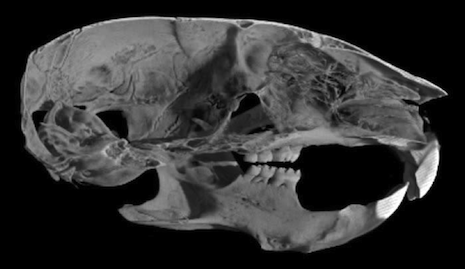
A centre for computed tomography serving the Biomedical, Engineering, Environmental and Archeological sciences
The fiction of Superman’s instant 3D X-ray vision is fast becoming a reality across numerous scientific disciplines, with the imaging capabilities of X-ray computed tomography (CT) now reaching far beyond the more widely known medical domain.
The last decade has seen a dramatic enhancement in the technologies available for rapid CT scanning of objects of interest to many scientific disciplines, from rodents to rocks to rockets. Whilst taking high resolution three dimensional images via CT scanning has become almost as rapid as taking a polaroid photograph, there is a price for scientists and engineers using the technique; few are prepared for the enormous volume of information that is produced and the extensive analysis required.
The newly established μ-VIS Centre brings together teams of scientists and engineers that have immediate need of CT imaging with world-leading experts in high performance computing and the art of image processing, along with a suite of advanced, flexible CT imaging hardware. It will be an efficient, multi-disciplinary centre for 3D imaging science, exploiting the latest technologies in cost-effective supercomputing and data handling methods, leveraging Southampton's extensive experience in eScience, unifying and simplifying the interaction between user, instrument and data.
When included with facilities already available at Southampton, the centre will support the entire imaging process for samples as small as an ant’s head, up to a large car engine; from initial experimental concept and training, through data capture and analysis, to new scientific knowledge.
Over 40 academics, drawn from over half of the Schools of the University are committed to this initiative. Four core themes are identified in Engineering, Biomedical, Environmental and Archaeological Science, aligning with Research Council UK priority areas such as Energy, Living with Environmental Change, Nanoscience, and Ageing: Lifelong Health and Wellbeing.
With its training and user outreach components, the centre will support the next generation of application-led scientists and engineers in the opportunities that rapidly evolving 3D imaging technologies present. The centre draws together research interests in both a ‘bottom-up’ (PhDs and post-doctoral scientists performing experiments) and ‘top-down’ (applicants, international advisors and the research group leaders) manner, providing a vibrant focus for interdisciplinary development.